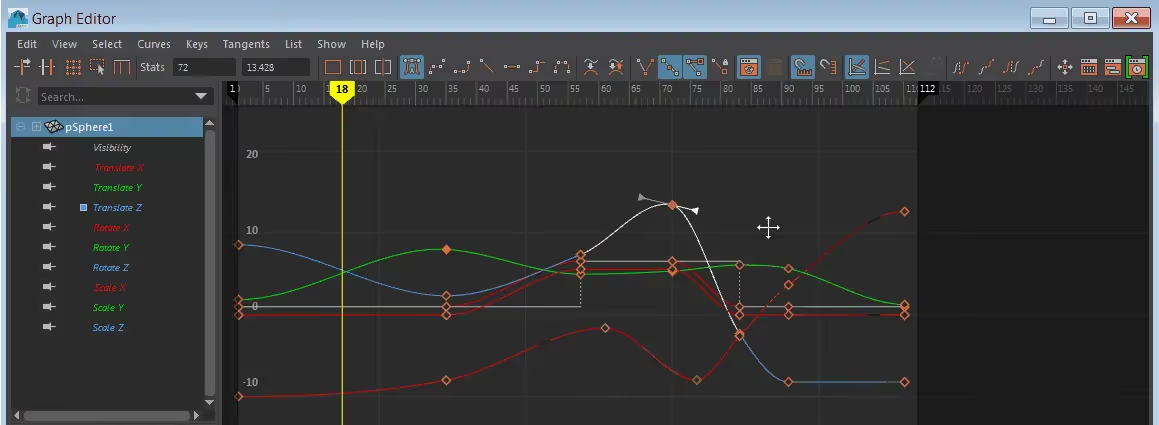%20(2).avif)
By Gonzago Montoya
Where 3D animation is concerned, two programs spark the most debate - Blender vs Maya. These powerful platforms both offer robust toolsets for bringing animated stories and characters to life. But as an animator, which one should you invest your time into learning and creating with?
As someone who's worked with both Blender 3D animation and Maya 3D animation over the years on projects big and small, I wanted to share my experiences with these programs from an animation focus. Here's an in-depth look at their key differences.
With thousands of GPUs and CPUs available on demand, you can slash render times and focus on your artistry. GarageFarm’s specialized Blender render farm and Maya render farm plugins make it easy to send scenes and assets for lightning-fast rendering direct from your 3D software. No complex setup is needed!
.avif)
When it comes to capabilities for complex character and creature animation, Autodesk Maya has long been the gold standard, especially for major studios. Maya's smoothly responsive IK spline tools make it easy to pose and keyframe even the most intricate rigs. The Graph Editor also provides incredible control for fine-tuning motions and dialing in important principles like anticipation and follow-through.

However, Blender 3D animation has advanced in leaps and bounds over the past decade, becoming a serious contender. Its redesigned Dope Sheet brings much-needed improvements to keyframe and timeline management. The intuitive Pose Library is an animator's dream for building a library of reusable pose snippets that can be accessed on the fly. Increased support for drivers, constraints and shape keys, as well as their own Graph Editor improvements, unlocks more advanced techniques.
While Maya still has the edge for ultra-complex character animation, I was stunned to see veteran animators pull off impressive feats in Blender on recent projects. It may not be as polished as Maya in this regard, but Blender has become more than capable for professional-grade animation work.
It's said that 90% of good animation is good rigging. When it comes to setting up skeletons and controllers for complex organic characters, Autodesk Maya is hard to beat. Its advanced options for skeletal, fleshy and wiggly controls enable extremely nuanced facial and body animations. Smooth bindings between joints and meshes ensure clean deformations without artifacts, critical for believable performance. And the seamless HumanIK system makes bipeds and quadrupeds a breeze to set up.
That said, I was pleasantly surprised by the polish of the auto-generated Blender rigs created with Rigify. While not yet on par with Maya, Rigify provides an impressive quick generation of customizable humanoid and animal rigs. Experienced riggers can also build extensively tailored rigs with Blender's armature system, constraints and drivers. For many projects, Blender rigs can get the job done very effectively. But for highly advanced character rigs, Maya remains the best solution.
.avif)
If your animation needs extend into motion graphics territory, both Blender and Maya offer robust toolsets. However, Blender's integrated node-based compositor often gives it a strong edge for tasks like particle simulations, color correction, camera effects and mixed media compositing. These lend themselves seamlessly to motion design projects.
Maya boasts its own suite of powerful tools. But for motion graphics, I found Blender's compositor more flexible. The node workflow aligns better with how my mind maps out complex animated graphics logically.
For me, workflow is where the Blender vs Maya comparisons diverge most drastically. Maya employs a classic keyframe timeline workflow inherited from traditional hand-drawn animation principles. The graphical interface mirrors this approach, making Maya quick to grasp for those with 2D animation backgrounds.
By contrast, Blender utilizes keyboard shortcuts and hotkeys for nearly every task. This takes time to learn but also allows for incredibly fast workflows once mastered. There's something immensely satisfying about flying through projects in Blender with the help of these shortcuts. But it requires breaking old animation habits and essentially rewiring your brain.
Which approach you ultimately prefer depends hugely on your style and background. I'd recommend trying both to see which clicks better with your creative thinking patterns.
.avif)
One advantage of Maya's popularity within major studios is the sheer abundance of high-quality training content available, both paid and free. Between Autodesk, LinkedIn Learning, Gnomon, Lynda and others, new animators have ample material to get up to speed, from beginner basics to master classes.
Blender's open-source community creates a wealth of tutorials too, though the quality varies more. I recommend trusted outlets like Blender Cloud, CGCookie, and Blender Guru for reliable Blender 3D animation learning materials. Some studios like Tangent Animation also offer paid Blender courses now. But Maya still has far more structured training options.
Possibly the most crucial factor is cost. An annual commercial Maya license can run over $1,500, plus additional costs for render licenses, plugins and third-party tools. For well-funded studios, this overhead is negligible. But as an indie animator starting out, Blender's free and open-source model was an absolute lifesaver, letting me sharpen my skills and build portfolio projects without any upfront investment.
While non-commercial usage of Maya is free, all commercial work requires paid licenses. Blender has no such constraints. This affordability and flexibility give it a huge advantage for independent creators.
So which 3D animation software should you invest your precious time into as an aspiring or professional animator? Here are my key recommendations based on your situation:
The "best" software depends on your goals. But Blender vs Maya need not be an either-or choice. The skills do translate fairly well between them. Having both tools in your toolkit gives you immense flexibility in a dynamic industry. So stay open-minded, embrace multiple platforms for their unique strengths, and keep honing your craft above all!